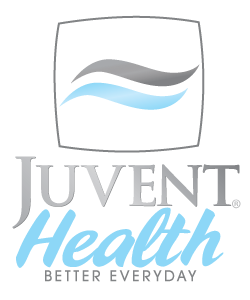When it comes to performance enhancement for physical activity and fitness, training recovery is oftentimes overlooked. Focusing on intensity and frequency isn’t the only thing to consider when you exercise. Thanks to innovative strategies, biohacking has revolutionized and supercharged the training recovery process.
What Is Biohacking?
In short, biohacking is a broad term that encompasses a diverse range of techniques designed to improve your overall performance. It is more of a scientific approach that allows you to be proactive about optimizing both your physical body and mind. Biohacking techniques for training recovery accelerate the body’s natural healing processes, boost vitality, and reduce inflammation thanks to cutting-edge technology. Here are a few examples.
- Cryotherapy: Exposing your body to extremely low temperatures for a very short amount of time, cryotherapy is used to reduce inflammation and muscle pain. Cryotherapy chambers promote a quicker training recovery time and have become very popular recently. Harvard Health has done a thorough review of this technology and its effects. Ice baths if used quickly after an injury or high-intensity work-out can slow the inflammatory process and quicken recovery. This North American Journal of Medical
Sciences offer a deep dive into what really happens to your body in an ice bath. - Red Light Therapy: Using LED bulbs or low-level laser therapy (LLLT), red light therapy exposes your skin to very specific wavelengths (660-900nm). This process stimulates your cell's mitochondria(the cell's powerhouse) ultimately triggering the cell's regenerative state. It can reduce inflammation, improve collagen production, and speed up tissue recovery. It is also great for the joints.
-
Sleep Tracking: Sleep is the most important regenerative activity you can do. Deep REM sleep is key to repairing and resting the body. While it may seem like an obvious thing to do, using a sleep tracker can help ensure that your body is getting enough downtime to recover. It may also help to determine whether you suffer from sleep apnea, a dangerous and possibly fatal sleep interruption. If you or your partner snores or stops breathing while you sleep, speak to your physician and get a formal sleep study done. To optimize your sleep, you can occasionally use supplements like melatonin.
-
Adaptogens and Nootropics: If you’ve never heard of these two natural substances before, then you’re in for a treat. However, you probably are already using one, caffeine, to help wake you up and provide that extra boost. Another family of nootropics is Cholinergics. Choline is an essential nutrient needed for the synthesis of acetylcholine, an important neurotransmitter. Eggs are a great source of Choline. Introducing adaptogens and nootropics into your training recovery routine will help reduce mental fatigue and improve your overall cognitive function.
- HRV Monitoring: Keeping track of your heart rate variability (HRV) will help you determine when your body is ready to train again. It will also empower you to push harder during certain workouts.
- HydroxyBMD2: Made from the best ingredients to promote bone and joint health, HydroxyBMD2 is a supplement system that improves flexibility and helps reduce discomfort. It contains a well-studied, proprietary formulation called Bonolive, an olive leaf extract (Olea europaea). HydroxyBMD2 also contains hydroxyapatite from New Zealand.
- Fasting: Going several hours to days without eating offers some very powerful healing and regenerative effects. Using a phone app like ZERO, and reading materials from Dr. Jason Fung, MD. Dr. Fung's Guide to Fasting is worth reading. Of course, check with your personal physician before undertaking any multi-day fast.
- Micro-Impact Exercise: When you run or jump, you expose your body to high impact. While impact plays a vital role in strengthening your bones and joints, too much can have a negative effect. Micro-impact exercise offers the benefits of impact without the adverse effects. You can safely use it daily before and after workouts or running to help clear the lymphatic system and promote healing.
Every Body Is Different
One of the key components of biohacking for training recovery is always to remember that every person is different. What works for one individual may not work for you. The best way to discover what types of biohacking are optimal for your fitness journey is to experiment simply. Try out different techniques and supplements to boost your performance, reduce stress, and improve your recovery time. As you try out new methods, you can track your progress and make any necessary adjustments accordingly.
Start Your Biohacking Journey
If you are serious about optimizing your training recovery time, then it is time to begin your biohacking journey. You can start off slow with only one or two techniques. Be sure to track your results. With patience and consistency, you should be able to see how these methods are helping your body repair itself after physical activity.
Remember, the quickest path to optimized training recovery begins with a proactive approach. Join our biohacking community and take a peek at our selection of Juvent Micro-Impact Platforms. Designed to keep your joints healthy and moving correctly, this is another biohacking technique you can employ in your training recovery routine.

